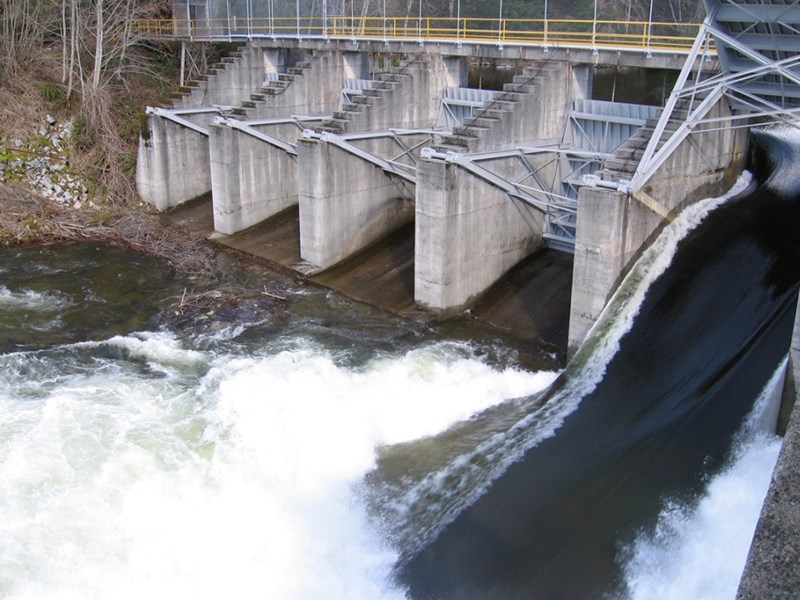Representatives from the group that owns Lois Lake Dam recently met with residents who live below the 72-year-old structure to report on its safety.
The dam is owned by Powell River Energy, a subsidiary of Brookfield Renewable. The facility supplies water for a hydroelectric generating station in Stillwater.
“There's nothing wrong with the dam; this wasn't to scare people,” said Andrew Davis, Brookfield’s director of stakeholder relations for North America. “It was more to get folks involved in the safety of the dam.”
Brookfield undertakes renewals of inundation area analysis and mapping of where flooding could occur in the unlikely case of a complete catastrophe causing the dam to fail, according to Davis.
Brookfield dam safety engineer Bashar Sudah said the structural integrity of the dam and how far the dam is from the inundation area are studied.
“We simulate a dam failure and we just see where the water goes based on that analysis,” said Sudah.
The inundation zone is based on the analysis of the flooded area, he added.
Davis said the purpose of the meeting was to present information about the dam safety program, how seriously Brookfield takes it, and what people need to do in the unlikely event that something occurs.
If the unthinkable happened, such as an earthquake or severe flood, the area most affected would be around Lang Bay, south of Powell River.
qathet Regional District manager of emergency services Ryan Thoms attended the public information meeting and said the district would be integrating understanding of the report into regional emergency plans.
“It’s important for all residents to understand the hazards and risks where we live and work and to use that information as the basis of our home and neighbourhood emergency plans,” said Thoms. “As I said at the meeting, the regional emergency service is available to assist residents and neighbourhood groups who want some guidance with how to develop their home and neighbourhood plans.”
The latest dam study done according to provincially mandated authority was completed in 2016.
“Our dam is safe,” said Davis. “There is not a risk there but it is something we undertake as part of our dam safety program.”
The inundation zonefrom the updated study in 2016 has changed from one previously done in 1989, mostly because of more sophisticated technology used and better topography data.
“We assume the worst-case scenario as part of this analysis, which would be the dam failing, completely collapsing, which is extremely unlikely,” said Davis.
According to Sudah, shortly after the dam’s completion to its current height in 1946, it was undamaged when a major earthquake hit the Powell River area from a category 7.5 epicentre near Courtenay. It was one of the biggest in BC history and the largest onshore in Canada.



